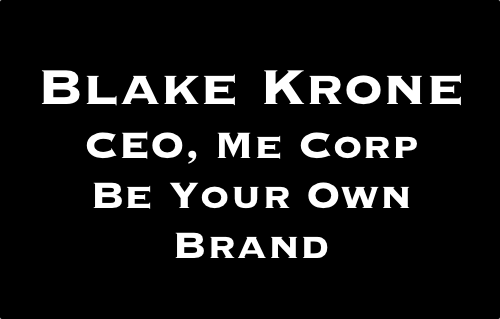I started my journey of wireless in 1999/2000 while I was at the University of Minnesota. I was working for the help desk and running a dorm lab, just as I was starting out the Orinoco AP-1000 and Apple Airport were starting to popup in kiosks around campus but it still wasn’t anything close to what we are doing today obviously. Back then we designed for coverage, not capacity. You cranked up the AP to cover as large of an area as you possible could, thus making people always start off their discussions with “how many square feet does this cover?” or “what’s the square footage per ap?” and that unfortunately never went a way. But we aren’t here to discuss that, what I want to talk about is who I’m calling Waldo here in this post: the skilled wireless engineer. Take note of that, I had to add skilled before it to make sure we were all on the same page. Let’s define it a little more shall we? What do I mean by a skilled wireless engineer? Do I mean they are CWNE or CCIE or AC[ ]X? No, not at all. I simply mean someone that understands wireless and the challenges it brings when trying to design. It’s the person that knows about Co-Channel Interference and Adjacent Channel Interference, someone that understands when and how to use 20/40/80MHz channel widths, the person that knows you have to do a survey to get things right, etc. OK, so that is out of the way now, let’s get back to the topic at hand: Where’s Waldo?
One of my biggest struggles I’ve had over the past few years has been finding these skilled wireless engineers, it’s even hard to find someone that I can train to become a skilled wireless engineer! But why is that? Dare I say that a route switch or voice engineer is a dime a dozen? I don’t necessarily feel that wireless is 1000x harder than designing a data center core, when you get into large scale corporate networks or data centers the line between performance and security is very similar to that of a RF designer. Ensuring scalability in a vmware cluster is just as tough, as well as making sure you have the IOPS you need on your storage arrays. I think we all have challenging aspects to our roles but I think it comes down to perception and cost of tools as the reason why our numbers are limited.
Perception
How many times have I heard wireless is easy because someone went down to a big box retail store and bought an AP? Too many times to count. There are a lot of fly by the seat of their pants groups out there that think they can easily do wireless because of any number of reasons such as they did it at home or they installed it for their mom, etc. These wireless engineers are the ones that are rocking 80MHz channels in a high density environment and wondering why they have problems, or they buy lower end gear and turn on 40MHz in 2.4GHz even! These are the folks that when bidding a project rely solely on built in rough estimating tools and say you don’t need to do a site survey. They end up coming in thousands less and deliver a product that is going to cost the customer thousands more to remediate. These engineers sometimes may have even been a skilled wireless engineer at one point in time but allowed their abilities to lapse due to not keeping up with the technology.
So what’s the solution with perception? How do we fix the “wireless is easy” mindset that a lot of folks are in? We need to drive people to understand the benefits of vendor neutral training programs like CWNP or design specific training like Ekahau ECSE and AirMagnet’s Training. Whether or not someone gets the certification doesn’t really matter providing they take the time to learn the material and understand how things work. It’s important for people to have development plans that not only include time to study but time for continuing education as well. So many will go and get a certification and claim to have it for 6+ years when they never once renewed the certification or did any continuing education to keep up with it. Our industry like other tech industries is an ever evolving and changing industry, you need to be constantly learning or get left behind. The other key to fixing perception is being mentors for others, share the knowledge and help others grow and understand.
Cost of Tools
I’ve written about these before over on the podcast, No Strings Attached Show (NSAShow), but it’s worth recapping here real quick again. To be a skilled wireless engineer you need the right tools. You can’t simply work off of “bars” on a laptop or phone. A bar could swing a very large range and doesn’t provide a consistent easily read value that can be used for comparisons. There is no physical cable that can be traced to physically see where a break or tight radius might be. We can’t pickup a phone and hear a dial tone to know we are connected. Many say wireless is black magic, it’s this mystical thing that requires special goggles to see. Truth is there isn’t much black magic about it, it comes down to having the right tools to decode what is going on. I’ve seen a lot of organizations that just don’t get it when it comes to tools, whether they are software or hardware. It’s a necessary expense and it’s an expensive one but you have to spend money to make money and be successful.
I don’t really have much of a solution to the cost of tools. Maybe if we fixed the problem with the perception the cost of tools will lower because larger volumes will be purchased? It’s hard to tell, we can’t expect the developers to drop their prices and eat into their revenue stream that pays for the development of the product.
Find Waldo?
Are you still with me? Did you find Waldo yet or do we need to break out our Orphan Annie Secret Society Decoder rings? Obviously if you are reading this you are either a) wanting to be a skilled wireless engineer b) are a skilled wireless engineer or c) searching for the end of the Internet (good luck, I’ve looked a lot for that). If you fall into a or b then you are Waldo or will be Waldo soon. It’s up to us, so until we grow our numbers by mentoring and being leaders to others it will always be a challenge to find Waldo. We need to get involved in the community whether it be twitter or events like WLPC and Tech Field Day. Don’t fear the sharing of knowledge as a way of protecting your job, if we don’t change the perception it’ll be harder for us to continue to have jobs.



